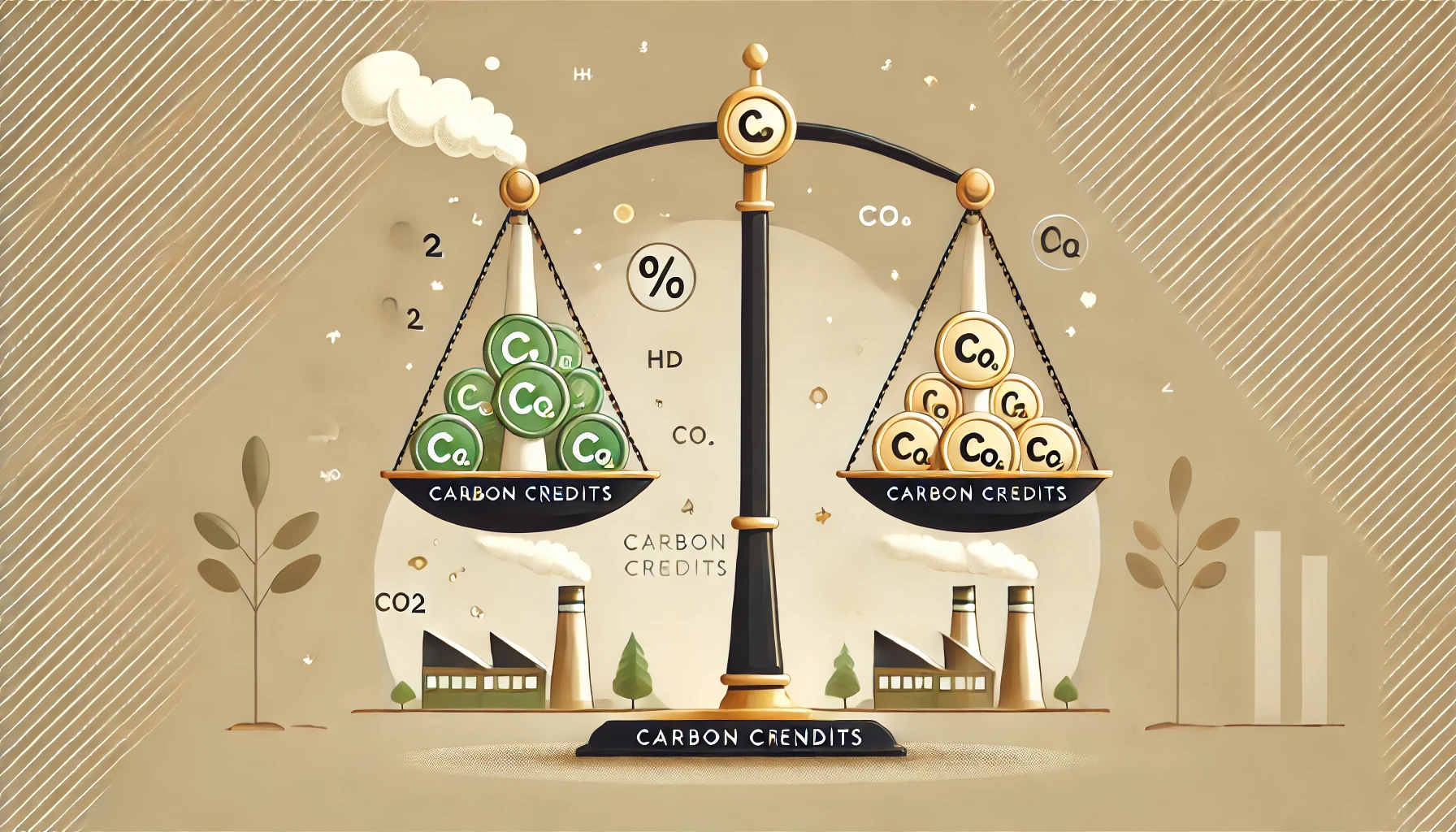Introduction to Carbon Credits
As climate change continues to dominate global conversations, carbon credits have emerged as a key solution in the fight against greenhouse gas emissions. Carbon credits are permits that allow the holder to emit a specific amount of carbon dioxide or other greenhouse gases. Typically measured in metric tons, they enable companies to offset emissions they cannot reduce, creating a market-driven approach to lowering global emissions.
Carbon credits play a vital role in achieving net-zero emissions by encouraging investments in projects that reduce or remove carbon emissions, such as reforestation, renewable energy, and carbon capture initiatives.
How Carbon Credits Work
The system behind carbon credits is fairly straightforward. For every ton of carbon dioxide that a project prevents or removes from the atmosphere, one carbon credit is issued. These credits are bought by companies or individuals to compensate for their own emissions.
There are two main types of carbon markets:
- Compliance markets: These are regulated markets where companies are required to meet certain emission reduction targets. The European Union Emissions Trading System (EU ETS) is a prime example(
- Voluntary markets: These markets allow companies and individuals to voluntarily purchase credits to offset their emissions. As corporate social responsibility initiatives grow, voluntary markets are becoming more popular(
Impact on Businesses and the Environment
For businesses, purchasing carbon credits offers a way to balance their environmental impact while maintaining operations. Companies can invest in carbon offset projects to neutralize emissions from activities they can’t eliminate yet. This creates a dual benefit: meeting regulatory requirements and enhancing brand reputation as eco-conscious consumers increasingly favor sustainable businesses(
From an environmental perspective, carbon credits help fund projects like reforestation, renewable energy development, and methane capture, all of which are essential in reducing global greenhouse gas emissions(World Bank).
Factors Influencing Carbon Credit Pricing
The pricing of carbon credits can vary widely depending on several factors:
- Market Type: Compliance markets like the EU ETS typically have higher prices than voluntary markets due to stricter regulatory requirements(World Bank) (BloombergNEF).
- Project Quality: Credits from high-quality projects, such as those with strong verification systems or that promote biodiversity, often command higher prices(McKinsey & Company).
- Geopolitical Factors: Policies such as carbon tariffs and border adjustments play a significant role in pricing. The EU’s Carbon Border Adjustment Mechanism (CBAM), for instance, places a cost on imports from countries with weak carbon regulations(
In 2024, the price for carbon credits in markets like California is expected to average $42 per metric ton, while EU carbon prices are forecast to be around €71 ($76)(BloombergNEF).
Current Trends and Future Outlook
The carbon market is poised for significant growth. In addition to tighter regulations, more sectors—like shipping and cement—are being incorporated into carbon pricing schemes. Moreover, as companies seek high-quality offsets, voluntary carbon markets are also expanding rapidly(BloombergNEF).
With global efforts to achieve net-zero targets by 2050, carbon pricing is expected to continue rising, and carbon credits are predicted to play a key role in incentivizing businesses to transition toward more sustainable operations(BloombergNEF)(World Economic Forum).
Criticisms of the Carbon Credit System
Despite their importance, carbon credits face several criticisms. One key concern is that some companies may use carbon credits as a substitute for reducing their emissions, opting to offset instead of decarbonizing their operations. This has led to accusations that carbon credits are a way for companies to “pay to pollute”(McKinsey & Company).
Another issue lies in the quality and verification of some credits. Inconsistencies in how carbon credits are certified—especially in voluntary markets—can lead to low-quality credits being sold, which may not deliver genuine environmental benefits(
How Carbon Credits Contribute to Global Climate Goals
Carbon credits are central to achieving global climate goals like those outlined in the Paris Agreement. By placing a price on carbon, these credits incentivize businesses to reduce their emissions and fund projects that remove carbon from the atmosphere.
For instance, carbon credits from reforestation projects not only reduce carbon in the atmosphere but also support biodiversity and local communities. They offer a practical solution to bridge the gap between current emission levels and the ambitious targets set by international agreements(World Bank)(World Economic Forum).
How Businesses and Individuals Can Benefit from Carbon Credits
For businesses, investing in carbon credits offers a variety of benefits:
- Regulatory Compliance: For industries subject to emissions regulations, purchasing carbon credits can help meet compliance targets.
- Corporate Social Responsibility: Offsetting emissions can enhance brand reputation, signaling to consumers that the company is committed to sustainability(McKinsey & Company).
- Financial Protection: As carbon prices are expected to rise, businesses investing in credits now may benefit from future price increases(BloombergNEF).
For individuals, carbon credits offer an opportunity to take direct action on climate change, aligning personal values with sustainable investments(World Economic Forum).
Conclusion
Carbon credits, while not a perfect system, are an essential tool in the global fight against climate change. They enable businesses and individuals to offset emissions they can’t directly reduce, while also funding critical environmental projects. As the world moves toward more aggressive climate goals, carbon credits will play an increasingly important role in reducing emissions, driving innovation, and promoting sustainability.

